Arunachal Pradesh the Land of Natural Wonders
If you dream to experience a calm environment, jaw-dropping landscape, sky-hugging mountains, serene sunrise, lush green carpeted vegetation, and amazing tribal life, then, certainly Arunachal Pradesh the Land of Natural wonders, should be on your most preferred travel list.
Arunachal Pradesh is known as the “land of dawn-lit mountains”, meaning the Land of the Rising Sun. This is one of the Seven Sisters states in the North-Eastern Region of India and is India’s remotest easternmost state and the first Indian soil to greet the rising sun. In 1999, it was found that the first ray of the sun on Indian Soil can be experienced from a small village, Dong located in Dong valley of Anjaw district near the point where India, China, and Myanmar meet.
Therefore, this village is also known as, India’s land of the Rising Sun. This amazing land is endowed with a dazzling array of flora and fauna that is sure to allure any tourist. More than 600 species of Orchids are found in this state. The misty hills, sparkling rivers, and gurgling waterfalls add charm to the beauty of this incredible land. Arunachal Pradesh is also called the “Paradise of botanists” and the “Orchid State of India” as well.
History of the Arunachal Pradesh the Land of Natural Wonders
Unfortunately, there is hardly any well-documented historiography available on the social and cultural past of this entire North Eastern Region. Proper documentation was started only during the British era in India. The historians reconstructed the past based on oral traditions like folk tales, folk songs, myths, and legends, as well as studies on the symbolic representation of rituals and traditions, in the form of festivals and fairs. Therefore, whatever is available now is fragmented, in the form of monographs and census data. Hence Many pages of history, we can say are still unturned.
Although it is believed that people are living in the Himalayan region since ancient times may be for the past 15,000 years. It is also believed that this region finds a mention in the epics of the Mahabharata, the Ramayana, and the Puranas. Hindu mythology says that “Parshuram” the sage (one of the 10 Avatars of the Hindu God Lord Vishnu) washed away sins in this region at a place known as Parshuram Kunda in Arunachal Pradesh itself. This region was also the meditation point of sage “Vyasa”, the author of the great epic Mahabharat. Certain tribes residing in these states, accept this ancient lineage and also follow the prescribed traditions and rituals to date. The Idu Mishmi tribe, a major sub-tribe of the Mishmi Group of Arunachal Pradesh traces their lineage to Rukmini, Lord Krishna’s wife. Similarly, the Bodo tribe of Assam (the neighboring state) believes that they are the descendants of the demon (asura) warrior Ghatothkach, the noble valiant son of Bhima.
Before the British accorded their authority in this region, Arunachal Pradesh was ruled by different kings like the Ahoms, Chutias, Monpas, and Sherdukpens. All these dynastic rulers kept invaders away from the territory for a long time. Even the Delhi Sultanate, the Mughals, and the British couldn’t invade it. British entered this region in 1826 after winning the war against Burmese invaders. Following this, the British started annexing different territories of the region to expand their authority.
In 1912–13, the British Indian government made agreements with the indigenous peoples of the Himalayas of northeastern India to establish the North-East Frontier Tracts. This tract was divided into three sections, the Ballipara Frontier Tract in the west, the Abor and Mishmi hills and the Tirap frontier tract in the south, and the Sadiya Frontier Tract in the east. This is now Arunachal Pradesh.
The northern boundary of the state is extended up to McMahon Line. This line was decided at the conference held in 1912–13 in Shimla, in the state of Himachal Pradesh to settle frontier and other issues relating to Tibet. This is about 550 miles (885 km) long and has been a lasting point of contention between India and China.
After independence, India declared the McMahon Line as the boundary of the state in November 1950, and accordingly, in 1951, the Tibetans left Tawang. In 1954, the Government of India under the Ministry of External Affairs, formed North-East Frontier Agency (NEFA), to administrate this state. This Ministry administrated the NEFA until 1965 and then it was by the Ministry of Home Affairs. It became a Union Territory on 20th January 1972 and was renamed Arunachal Pradesh, by Bibhabasu Das Shastri, the Director of Research, and K.A.A. Raja, the Chief Commissioner of Arunachal Pradesh. Subsequently, it became the 24th State of India on 20th February 1987.
Geography of Arunachal Pradesh the Land of Natural Wonders
The state covers a total area of 83,743 km2. It borders the states of Assam and Nagaland to the South. It shares international borders with Bhutan in the west, Myanmar in the east, and China in the north at the McMohan Line. A huge part of Arunachal Pradesh is captured by the Himalayas, whereas, the Patkai Hills cover some parts of Changlang, Tirap, and Lohit. The Gorichen peak- Main and the Eastern Gorichen peak, Nyegi Kangsang, and the Kangto peak is the highest peaks in this region. The mountainous area of Arunachal Pradesh is further divided into five river valleys, the Tirap, the Lohit, the Siang (Brahmaputra), the Subansiri, and The Kameng.
The climate of Arunachal Pradesh
Being a mountainous region, the climate in Arunachal Pradesh varies with elevation. Very high areas experience a tundra climate, and in the middle Himalayan region, a temperate climate is experienced. At the lowest elevation of the Himalayas at sea level, the sub-tropical climate persists when summers are hot while winters are mild.
From May to mid-October, the state receives heavy rainfall, and traveling during this season should be avoided.
Best Time to Visit Arunachal Pradesh the Land of Natural Wonders
The climate of Arunachal Pradesh throughout the state is not the same. Higher elevations have a much cooler climate than middle and lower ones. October till April is the best time to travel.
Traditions and Festivals in Arunachal Pradesh
The culture of Arunachal Pradesh is truly varied. There are 26 tribes and more than 100 sub-tribes in the state. Further many people have migrated from different parts of India to this state. The eastern and central part of Arunachal is mainly influenced by animist traditions. They are the worshippers of the Sun and Moon God – Donyi Polo and Abo-Tani. The major tribes in this region are the Apatanis, Adi, Akas, Galos, Mishmis, Nyishis, and Thangsos. The western part of the state has a Monpa population and they are followers of Mahayana Hinayana (a sect of Buddhism). But in this diversity one thing, you will find common, is that people celebrate every festival with full zeal, enthusiasm, and vibrancy. These festivals are tribal, harvest, and spiritual.
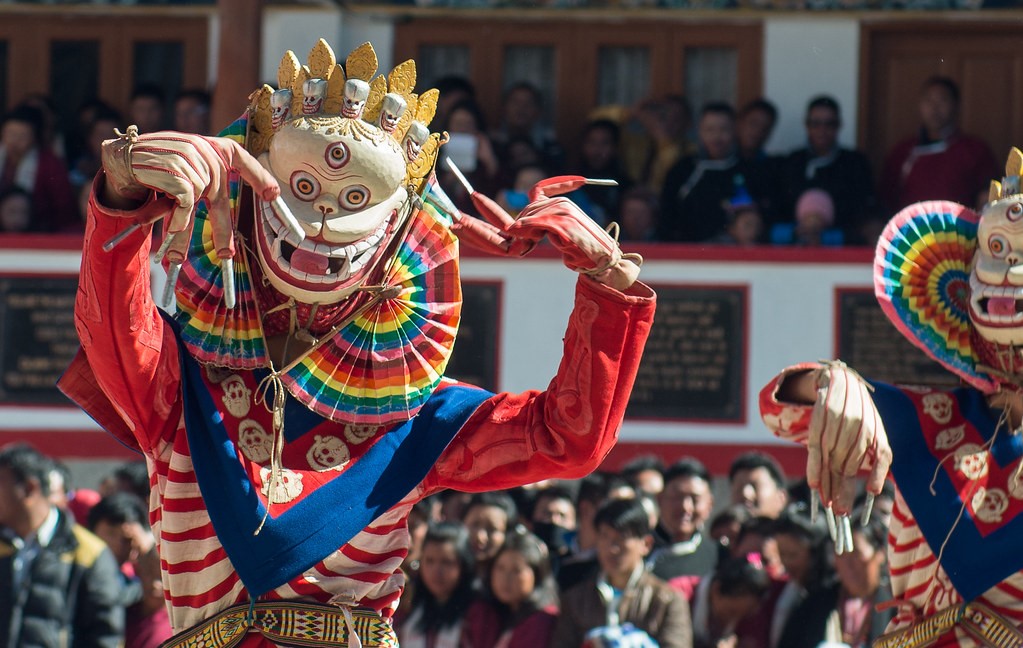
It will be a great experience for any traveler to visit the state during festival time. Below is the list of a few Important festivals, celebrated here with full of joy and enthusiasm are:
- Pangsau Pass Winter Festival, in January
- Torgya Festival, in January
- Nyokum Yullo, in February
- Lossar Festival, February
- Myoko Festival, in March
- Mopin Festival, in April
- Dree Festival, in July
- Ziro Festival of Music, in September
- Tawang Festival, in October
- Basar Confluence, in December
- Dambuk Orange Festival, in December
- Siang River Festival, in December

Vegetation of the Arunachal Pradesh
Due to diversified climatic conditions, Arunachal Pradesh has five types of forest vegetation, tropical forests, sub-tropical forests, temperate forests, pine forests, and alpine forests. Many rare variety floras are found in the state. Still, it is believed that there are more unknown varieties available inside the forest, that need to be explored. Different forest regions give birth to different vegetation.
This state has about 600 different beautiful species of orchids, out of which few are extremely rare. That is why this state is also known as “The Orchid State of India” or “Orchid Paradise”. Although every species has different botanical names, few are widely known by their local names, such as, “Sita-Pushpa” and “Draupadi-Pushpa”.
It is believed that Goddess Sita (Ramayana) and Draupadi (Mahabharata) used to wear these as their ornaments. Apart from these two, there are around 150 more special species, which are used for ornamentation by the locals and also have some commercial significance. Few species available here are extremely rare and classified as endangered. Arunachal Pradesh Forest Development Corporation has established an Orchid Research and Development Station at Tippi in the West Kameng district for the propagation and conservation of these species.
Apart from Orchid, this is the state where many exotic herbs grow. Around 500 medicinal plants have a home in the state.
Feather and Fur
Arunachal Pradesh is blessed with a variety of fauna. The forests here are the home of around 25 species of mammals, vivid butterflies, beautiful birds, and endangered species of animals. The only state where four major cats can be seen are the tiger, leopard, clouded leopard, and the rare snow leopard. Species of lesser cats like the leopard cat, golden cat, and marbled cat also can be seen here.
Primates with their seven different species like, capped langur, stumped-tail macaque, slow loris, Assamese macaque, hoolock gibbon, rhesus macaque, and pig-tailed macaque also feel comfortable in the lap of nature here. Arunachal Pradesh is the only state where all three varieties of antelopes are found i.e., goral, serow, and takin inhabit. The low grassland area also enjoys the presence of the critically endangered small mammal hispid hare or caprolagus hispidus. Elephants, wild buffaloes, and gaur are found at the foothills.
Rodents also inhabit here. Himalayan black bear, goral, and red panda occur in higher elevations including some rare species like Sclater’s monal, Mishmi wren, white-winged wood duck, etc. Over 500 species of beautiful birds are found in Arunachal Pradesh. The great Indian Hornbill, an extraordinary bird with a very large beak, inhabits this state. Indian Hornbill is declared the state bird of Arunachal Pradesh. The ‘Mithun’ (Bos Frontalis), an animal with religious significance is found here. This is the State animal of Arunachal Pradesh.
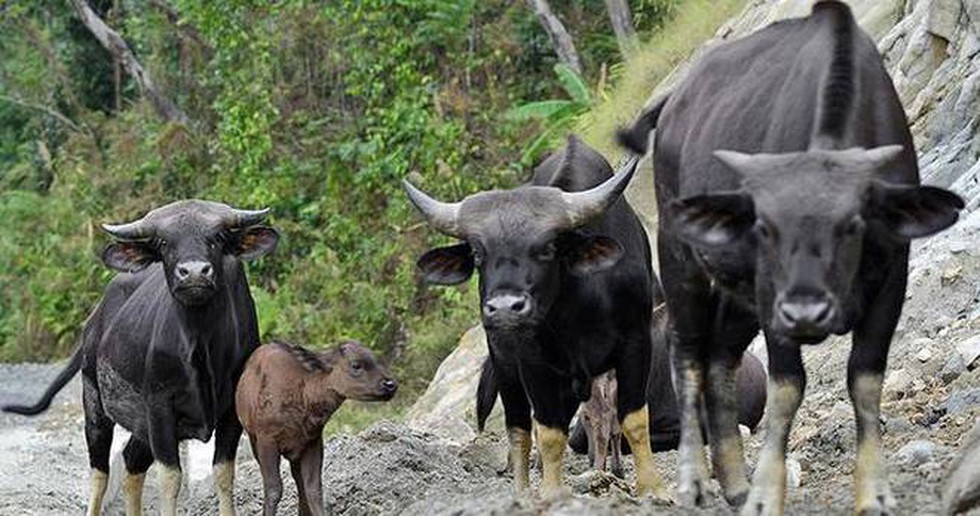
The state has two National Parks and nine Wild Life Sanctuaries:
National Parks
- Namdapha National Park &Tiger Reserve (The only park in the World to have the four Feline species of big cat namely the Tiger (Panthera Tigris), Leopard (Panthera Pardus), Snow Leopard (Panthera Uncia) and Clouded Leopard (Neofelis Nebulosa)).
- Moulinga National Park (Animals such as the takin, goral, Indian leopard, Bengal tiger, barking deer, serow, and red panda are living in the park)
Wildlife Sanctuaries
- Dibang Wildlife Sanctuaries
- Kamlang Wildlife Sanctuaries
- Itanagar Wildlife Sanctuary
- Daying Ering Wildlife Sanctuary
- Pakhui Wildlife Sanctuary
- Mehao Wildlife Sanctuary
- Kane Wildlife Sanctuary
- Eagle’s Nest Wildlife Sanctuary
- Sessa Orchid Sanctuary (with a variety of orchids and some wildlife too. This is located in the West Kameng district of Arunachal Pradesh and is the first, and until recently the only, protected area in India dedicated to the preservation of naturally growing Orchids)
Things to do at Arunachal Pradesh the Land of Natural Wonders
In Arunachal, you have many activities to explore.
- Angling in Arunachal Pradesh
Arunachal Pradesh is widely covered with Mountain and evergreen forests. The state has Five major river basins, starting from the west with the Kameng, followed by the Subansiri, Siang (Brahmaputra), Lohit, and Tirap.
Angling & Fishing lovers may find many options in the state. The abundance of water and the support for the sport from the administration aided this sport to grow manifold. Catching fish, especially Trout and Mahseer has a better chance to get hooked. Every passionate angler knows that catching Golden Mahseer is an important accomplishment for them. This fish is extremely tough to catch – as it puts on a tough fight once it is hooked. Mahseer tests the skill of the anglers.
Angling here is a lifetime memory that enthralls you. Although all Five major rivers are ideally located for hauling a bountiful catch, the Siang River and Subansiri River are probably the best. Since these rivers are pristine and have plenty of oxygen in the water, hence the catch will always be good. But we want Anglers to respect nature and they should dutifully release the catch again in the river after testing their skill. Golden Mahseer especially is an endangered species and requires special attention from anglers. This mysterious Mahseer is the queen of the Himalayan Rivers and has many cultural and religious significance amongst the locals.
- Trekking in Arunachal Pradesh
Trekking is another way to enjoy your trip to the state. Adventurers must visit here to explore the numerous trekking routes in the mountains. Trekking in the Bomdila-Tawang area probably is the best, as the area around Tawang Chu is both the most interesting and challenging. Start from Jung, trek to Mago, and enjoy the landscape and beauty of the jungle overlooking some superb waterfalls. Simply breath-taking. A few more fascinating trekking routes are Bomdila-Seppa, Along-Mechuka, Daporijo-Taksing, Pasighat-Tuting, Pasighat-Mariang, Daporijo-Along and Bomdila-Daimara-via-Ramalingam, and Chakku.
Moreover, while trekking, on a certain route you can also enjoy angling Mahseer Fish. Don’t forget to carry your Camera to capture Arunachal’s wild and pristine beauty. The best months for trekking are May and October.
- Rafting in Arunachal Pradesh
Arunachal Pradesh is a great place for boating and rafting. The people in this region are very adventurous. Clubs and State Authorities frequently organize events to host such adventure sports, especially in its upper reaches. Especially rafting in the Sian River is the most exciting and thrilling. Geographical explorers, in past used to address this river as the ‘Missing link’ while trying to unravel the link between the rivers Brahmaputra of Assam and Tibet’s Tsangpo. Tibetan belief, the Siang River is a “horse mouth river” and its sands are emeralds that flow towards the east. They also believe that by drinking water from this river, one can become stronger like a horse. Other interesting river rafting routes in the state are Kameng (Seppa- Bhalukpung), Subansiri (Taliha- North of Daporijo), and Dibang (Anini- Assam Border).
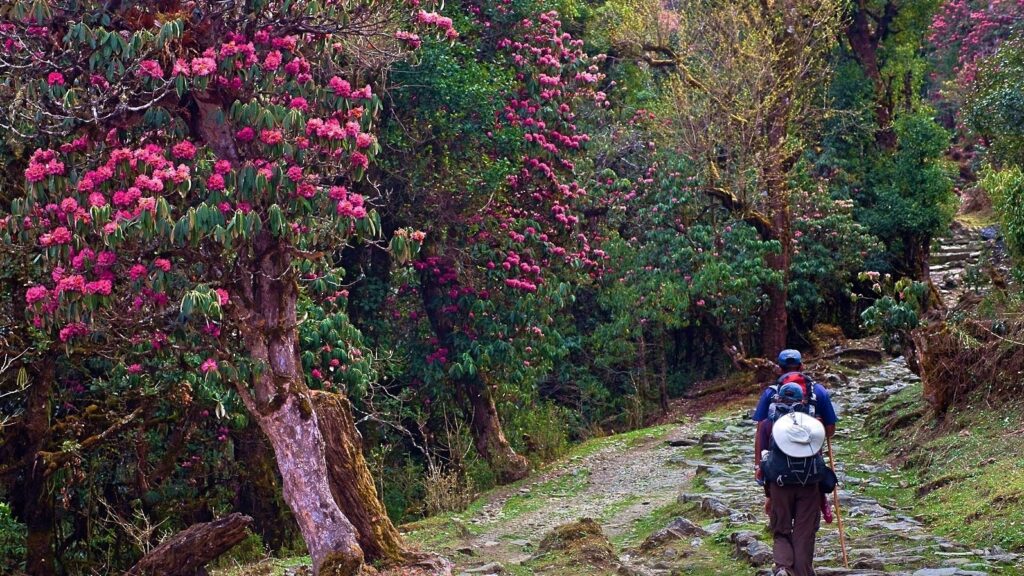
- Wildlife Safari in Arunachal Pradesh
When the population of the big cat family is declining rapidly in the world, Arunachal Pradesh is probably the only state who proudly enjoys the distinction of habitating four big cats, a tiger, leopard, clouded leopard, and snow leopard in their forests together. Moreover, this state is also home to two endangered feline species- golden cat and marbled cat.
Regarding avian varieties, over 500 species are found in Arunachal with a notable number being highly rare and declared endangered. Species like a White-Winged Duck, Scatter, Mona Bengal Florian, etc are not found anywhere except here. Apart from these, there are also other varieties including the exclusive Takin (one of seven species of primates found in Arunachal) and the majestic mammal called Mithun are found here. Out of these Mithun, also known as Gayal, Drung ox, or Cattle of Mountain” has lots of social and religious significance in the life of the people of Arunachal Pradesh.
Mithun is the state animal of Arunachal Pradesh. The state has two National Parks and nine Wild Life Sanctuaries. Some of the notable ones are Pakhui Wildlife Sanctuary, Eaglenest Wildlife Sanctuary, Kane Wildlife Sanctuary, Mouling National Park, Daying Ering Memorial Wildlife Sanctuary, Mehao Wildlife Sanctuary, Dihang-Debang Biosphere Reserve, and Namdapha Wildlife Sanctuary. For bird enthusiasts, the list is vast and includes certain exotic and dazzling species like White Winged Wood Duck, Bengal Florican, Temminck’s Tragopan, Mishmi Wren, and Sclater’s Monal, etc.
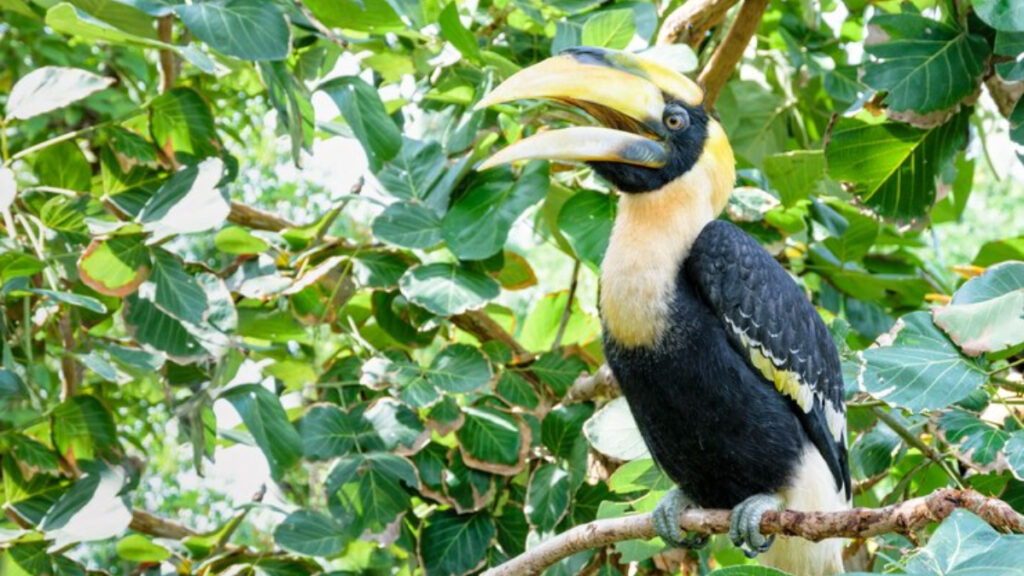
- Cultural and Festival diversity in Arunachal Pradesh
The cultural life of Arunachal Pradesh is truly well-diversified. This state has 26 major tribes including 100 sub-tribes. Every tribe carries its unique traditions and customs. The major tribes of Arunachal are Adi, Galo, Aka, Apatani, Mishmi, Nyishi, Tagins, Bori, Bokar, etc.
Tribes & Beliefs
The sun and the moon are the presiding deities of the major tribes who follow the Donyi-Polo religion (the name stands for sun and moon). The West Kameng and Tawang districts are mainly inhabited by the Tibetan-influenced Monpa and Sherdukpen tribes. In the Lohit district, it is the Khampti and the Singpho tribe. All these four major tribes are followers of two different sects of Buddhism (Mahayana Hinayana). The other tribes are followers of ancient beliefs with animal worship being quite prominent among them.
Festivals
Every festival in Arunachal Pradesh is vibrant and colorful. Agriculture plays an important role in the life of the people of Arunachal. Therefore, most festivals are celebrated as a mark of thanksgiving to the Almighty for giving them a good harvest. The mastery, artistic skills, and artisans showcased in these festivals are mind-blowing. The ZIRO Festival of Music, hosted in September in Ziro valley is the most electrifying, happening, and youthful event in the state. It’s the perfect blend of the traditional and modern culture of the people in the state. However, every festival is celebrated soulfully.
- Spirituality In Arunachal Pradesh
The potentiality of Arunachal’s spiritual tourism is yet to be explored fully. Arunachal Pradesh had a long historical linkage since the age of Mahabharata and it was from Bhismaknagar in the Lower Dibang Valley district that ‘Rukmini Haran’ took place. Lord Krishna and Rukmini rested in a place called Malinithan, which is in the Lower Siang district. This state has many Buddhist religious places in Namsai, Mechukha, Tuting, Bomdila, and Tawang.
Important places with Spiritual significance in Arunachal Pradesh
Chumi Gyatse Temple (Holy Waterfall Temple)
Chumi Gyatse Temple at Holy waterfall is a collection of 108 waterfall streams. It is at a location that is 4 hrs from Tawang City near Tsechu Hot water stream at Tsechu village (Damteng) near LAC (with China). Chumi Gyatse Temple is highly revered by the Monpas tribe (Tibetan Buddhists) of the state. Its water is highly purified which has various medicinal values. It is a natural wonder and treasure destination for the state.
Urgelling Monastery (Gompa)
Urgelling Monastery is a Buddhist Monastery. It is at a distance of about five kilometers from Tawang township in a southeast direction. Urgelling village is reckoned to be the birthplace of the 6th Dalai Lama. Urgelling monastery was founded by Ugyen Sangpo in 1487 AD. It is said that the temple, was initially quite modest in construction. However, when the royal father was on his deathbed, he wished that the gompa be renovated. Unfortunately, the enlarged monastery was sacked around 1714, by the Dzongar Mongols, who were averse to the Nyingmapa sect, during a campaign against Bhutan. The present Urgelling gompa is a modest one, of a little more than 180 square meters in a plinth area, and has a double-storied structure. Every year on the 6th of July, the birthday of the 14th Dalai Lama is celebrated with great fanfare at the Gompa, by the locals.
Shivalinga at Kardo Hills
This is one of the largest Shiva Linga unearthed in recent times and is located inside the Kardo Forest. Mr. Prem Subha did this miraculous discovery while cutting a tree during the holy month of Shravana (a month dedicated to Lord Shiva under Hindu Religious thoughts and beliefs). This is 25 ft tall and 22 ft wide Shiva Lingam. One can see the traces of this ancient Lingam in the 17th chapter of the ninth section (Nava Khand ke Satrahwa Adhyaya) edition 1893, where it mentioned that the tallest Shiva Lingam will appear at a place which will be called Lingalaya. Here, one can also see the image of Goddess Parvati and Lord Ganesha. You can find here the river flowing by the bottom of the lingam.
Tawang Monastery
The Famous Gaden Namgyal Lhatse is roughly translated as “The peak of the heavenly abode of joyfulness and complete victory” and, is known as the Tawang Monastery. It was founded by Merak Lama Lodre Gyatso in 1680-81. The monastery stands on the spur of a hill, about 10,000 feet above sea level having ravines in the south and west, a narrow ridge on the north, and a gradual slope on the east. The monastery apart from being the fountainhead of the spiritual life of the people of this region is also the most important Socio-Cultural Institute having a tremendous influence on the culture and day-to-day life of the inhabitants of the region. It is said that the yarn given by the 5th Dalai Lama to Merak Lama enclosed the area bounded by the four walls.
Empong Monastery
Empong monastery is considered by the local people as ‘Ti Met’ (holy place) as it is believed that the statue installed there has special divine power. The story says that a long time ago an innocent villager whenever used the statue of Lord Buddha as a guard to protect her rice grains from the birds while drying in the sun, she noticed that no birds came near the grains. This statute is installed in the Empong monastery. Believers visit the place to have their wishes fulfilled. Hundreds flock here during the Sangken Festival every year. It is also believed that childless couples come here with their wishes for a child, and it gets fulfilled.
Golden Pagoda
Situated on the banks of River Teang, Kongmu Kham at Tengapani is a sight to behold. The splendid golden pagoda is built under Thai/Burmese architectural influence. This pagoda houses a beautiful gilded statue of Buddha, modeled on the Kala Buddha of Nalanda archive. The area also houses a center for cultural research of the Tai Khampti-singpho tribes, a library, and a monastery. Nearby is a tourist resort that provides accommodation in the form of individual villas and dormitories. Guests can enjoy the view of the beautiful golden pagoda from here and visit the nearby areas.
Parshuram Kund
Parshuram Kund is a Hindu pilgrimage site situated on the Brahmaputra plateau in the lower reaches of the Lohit River and 21 km north of Tezu in the Lohit district of Arunachal Pradesh, India. Dedicated to sage Parshuram, the popular site attracts pilgrims from Nepal, across India, and from nearby states of Manipur and Assam. Over 70,000 devotees and sadhus take a holy dip in its water each year on the occasion of Makar Sankranti, in January.
It is believed that Lord Parashuram the sixth incarnation of Lord Vishnu, on the order of his father Rishi Jamadagni, beheaded his mother Renuka with his axe. Since he had committed one of the worst crimes of killing his mother, the axe got stuck to his hand. His father pleased with his obedience decided to give him a boon to which he asked for his mother to be restored to life. Even after his mother was brought back to life the axe could not be removed from his hand.
This was a reminder of the heinous crime he had committed. He repented for his crime and on taking the advice of eminent rishis of that time, he arrived at the banks of Lohit River to wash his hands in its pure waters. It was a way to cleanse him of all his sins. As soon as he dipped his hands into the waters the axe immediately got detached and since then the site where he washed his hands became a place of worship and came to be known by sadhus as Parashuram Kund. Also, many stories varying from region to region in India describe the above incident and there are numerous temples dedicated to Lord Parashuram most of which are in Kerala. But this place attracts many pilgrims from near and far and quite a few sanyasis reside here and take care of the temple that is dedicated to Lord Parashuram.
Akashiganga
Akashiganga is one of the famous Hindu pilgrimage sites in Arunachal Pradesh. It is located in West Siang District. It is believed that the head of the body of Mother Sati (Goddess Durga) fell in this place. It, therefore, is regarded as an important Shakti (Power) worship Place. A sacred kund is located around 100 meters from the Akashigagna temple. Interestingly from a far distance, one can see some glittering things inside the Kund. But the moment he gets closer the shining object disappears. Due to this, the devotees consider it a holy Kund. It is also believed that the kund has some medicinal value for curing any kind of disease.
A treasure trove of heritage at Arunachal Pradesh
Arunachal Pradesh has many notable spots that bear testimony to its rich heritage. One such landmark is the magnificent Tawang Monastery which is 113 feet long and 80 feet wide. Built-in the 17th century, this monastery is inhabited by Buddhist monks belonging to the Mahayana School of Buddhism (Gelukpa sect). Many valuable antiquities as well as handwritten and printed books and manuscripts on Buddhism can be found here.
Malinithan is an archaeological site that consists of ruins of a Hindu temple of the early medieval period on the northern bank of the Brahmaputra River. The archaeological studies of the ruins indicate that the temple was built with granite stones by Chutia Kings between the 13th – 14th centuries. Kechai-Khaiti, a tribal goddess was believed to be the chief deity of Chutias who was worshipped in the ruined temple. The Malinithan archaeological site is located at the base of the Siang mountains in Likabali town, a sub-division of the Lower Siang district of Arunachal Pradesh.
Bhismaknagar is another archaeological site in the state. It is located near Roing in the Lower Dibang Valley district. This place was under the Kingdom of Chutias, a Bodo-kachari (Tibeto-Burmese) ethnic group that ruled over the region of Sadiya from the 11th to 16th Century CE. The fort, along with its fortifications and buildings, is built by using fired bricks. The fortified city has spread over an area of 10 square km. The wall is 4.5 meters high and 6 meters wide and was made using granite stone (6-9 courses) and bricks in the east, west, and south directions. In the north, the Mishmi hills provided a natural barrier. Although not much excavation is done at this site by the Government, hence probably it has many more wonders beneath the debris which we may see in the coming days. The architecture of the fort displays medieval culture. The potteries, terracotta figurines, terracotta plaques, and decorative tiles found from the fort after excavation has been preserved in the museum.
World War II Cemetery, a Large burial ground with about 1,000 graves of allied soldiers, who died in the Second World War during the defense of Japanese aggression in the China-Burma-India (CBI) theatre, is located at Stilwell Road ( Ledo Road ) in the Jairampur-Nampong road, Changlang district.

Most visited Tourist Places in Arunachal Pradesh
Sights you can’t afford to miss
- Geshila Peak (Tawang)
- Tsachu Hot Spring (Tawang)
- Banga Jang Lake (Tawang)
- Bap Teng Kang Waterfall (Tawang)
- Eagle Nest Wildlife Sanctuary (Tawang)
- Pangateng Tso Lake (Tawang)
- Madhuri Lake (Tawang)
- Sela Pass (Tawang)
- Mehao Lake (Roing)
- Sally Lake (Roing)
- Dr. Daying Ering Memorial Wildlife Sanctuary (Pasighat)
- Geykar Sinyi (Yupia)
- Lake of No Return (Changlang)
- Sessa Orchid Sanctuary (Bomdila)
- Indira Gandhi Park (Itanagar)
Nature, Waterfalls, and Parks for your Serenity
- Bum La Pass (Tawang)
- Nuranang Falls (Tawang)
- Nagula Lake (Tawang)
- Gorichen Peak (Tawang)
- Ganga Lake (Itanagar)
- Itanagar Wildlife Sanctuary (Yupia)
- Polo Park (Yupia)
- Daying Ering Wildlife Sanctuary (Pasighat)
- Namdhapha National Park (Ziro)
- Talley Valley Wildlife Sanctuary (Ziro)
- Orchid Research Centre (Ziro)
- Dolo Mando (Ziro)
- Sangti Valley (Dirang)
- Kamlang Wildlife Sanctuary (Tezu)
- Kampona Pond (Roing)
Landmarks, Monasteries, and Temples for your divine route
- Dihang Biosphere Reserve (Roing)
- Rukmini Nati (Roing)
- Mayodiya Pass (Roing)
- Tarin Fish Farm (Ziro)
- Shiva Linga (Ziro)
- Orchid Research Centre (Ziro)
- Pine Grove (Ziro)
- Regyaling Gompa (Tawang)
- Taktsang Gompa (Tawang)
- Urguelling Monastery (Tawang)
- Gyangong Ani Gompa (Tawang)
- Urgelling Gompa (Tawang)
- Jaswant Garh (Tawang)
- Tawang Monastrey (Tawang)
- Tawang War Memorial (Tawang)
- Tawang Craft Centre (Tawang)
- Brahma-dung-chung Ani Gompa (Tawang)
- Buddhist Gompa (Yupia)
- Buddha Temple (Itanagar)
- Gompa (Itanagar)
- Ita Fort (Itanagar)
- Kabak Yabi’s Residence (Itanagar)
- Dirang Dzong (Fort) (Dirang)
- Bomdila Monastery (Bomdila)
- The Golden Pagoda (Namsai)
- Bomdila View Point (Bomdila)
- Apple Orchards (Bomdila)
- World War II Cemetery (Changlang)
- Stilwell Road (Changlang)
- Pangsau Pass (Changlang)
Economy, Finance, and Business in Arunachal Pradesh
Arunachal Pradesh is an agricultural state, so, its economy largely depends on its agriculture. However, as per the ISFR 2021, released on January 13, 2022, the state has a 66,430.67 km2 forest cover area, which is 79.33% of its total Geographical area (83,743 km2). Therefore, the importance of Forests in the economy has the second most influence on the economic growth of the state. Tourism is another important sector that is serving a lot for the economic growth and development of the state. Both the Central and State Governments are putting their effort to promote tourism in the state. New tourism circuits are being planned for the state to attract tourists from worldwide.
Unexpectedly, Arunachal Pradesh has a serene, untouched beauty of nature. Truly it’s an UNEXPLORED PARADISE, a place with Natural Wonders.

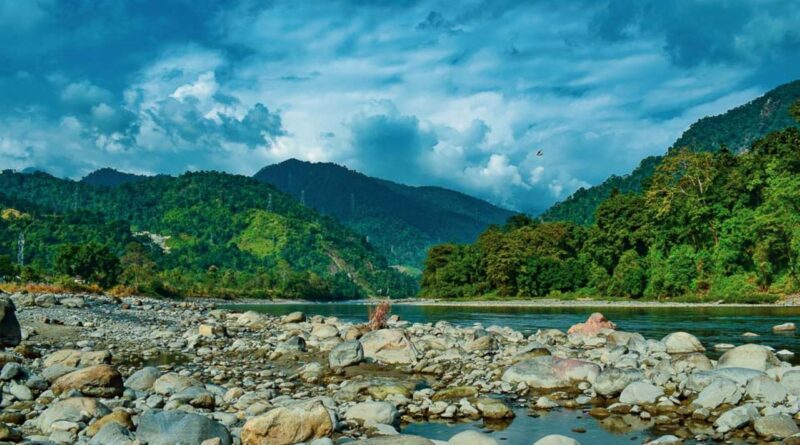

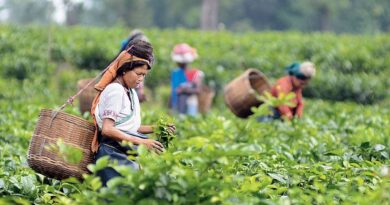

Thank you for your sharing. I am worried that I lack creative ideas. It is your article that makes me full of hope. Thank you. But, I have a question, can you help me?